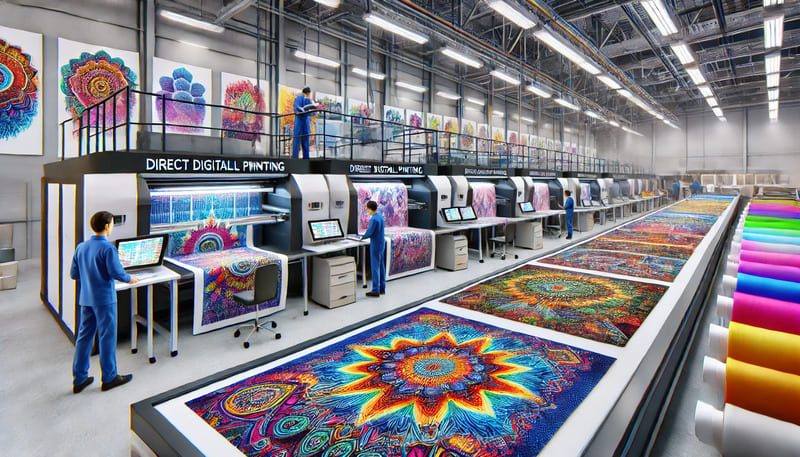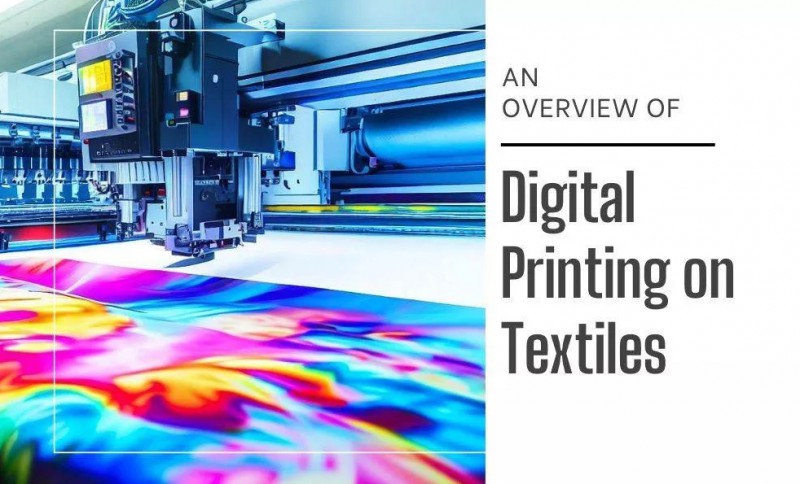Smithers, a leading provider of market research and analysis for the printing industry, has released a comprehensive report on the future development of industrial and decorative digital printing, which shows more growth for inkjet printing.
Digitally printed textiles and wall coverings are just one part of the booming industrial and decorative printing industry, and this report covers the uses of printing beyond traditional graphics, publications and packaging applications. The report provides valuable insights and data on the latest trends, innovations and growth opportunities in this dynamic industry.

The focus of the report is on the rapid rise of for-profit printing in the following areas:
-Decorative Styles
-Ceramics
-Printed Electronics
-Glass
-Printing in Automotive Industry
-Printing in Biomedical and Life Sciences Industry
3D Printing
-Inkjet Printed Textiles
According to the report, the industrial and decorative printing market will be worth $112.9 billion by 2024, growing at a rate of 5.5% through 2029.
The largest share of this market (51%) is electronics, which is expected to achieve a compound annual growth rate of 6.8% between 2024 and 2029.

Trends and Opportunities
The report was written by Jon Harper Smith, who has more than 15 years of experience in the printing industry. He has worked with Fujifilm, and other industrial and packaging printing companies, with a particular focus on industrial inkjet and flexographic printing processes. In an article on the Smithers website, Smith answered questions about trends and opportunities in industrial and decorative printing. Here are some excerpts:
Q:
Which sectors are seeing the strongest growth in industrial and decorative printing?
A: The area with the highest growth is digital textile printing. It is expected to grow at a CAGR of 9.5% in volume and 9.0% in value between 2024 and 2029. However, while digital textile printing will see the highest absolute growth, printed electronics will grow by $23.8 billion, a figure higher than all others combined.
Q:
What major trends are influencing the industrial and decorative printing market?
A: Vendors have developed new equipment that expands the range of applications, and new
digital textile printing inks, coatings and functional fluids offer new features such as flexibility, adhesion and durability.
Growth in digital methods is very strong, with new
digital printing inks and fluids opening up many new opportunities for printing on plastics, films, glass, wood, metal, ceramics, textiles, laminates and composite substrates.
One of the megatrends influencing global developments is the digitalization of manufacturing processes, the so-called Industry 4.0 technologies. Printing and finishing can be part of this, and in many cases printing can also bring some additional benefits.
For example, workflows control unique finishes such as custom clothing, kitchen backsplashes, wallpaper, or even cars, and then track the items as they are delivered to the consumer.

Q:
What opportunities are there for industrial and decorative printing over the next five years?
A: Most industrial functional printing markets and regions, including mature analog processes, are showing continued growth. While the route to market is very different from traditional printing, there are still many opportunities for companies involved in the graphics and publishing and printing industries, as well as equipment and digital inks suppliers.
The demand growth reflects the growing integration of print into architectural, automotive and general manufacturing products. The functional printing market is extremely fragmented and involves many different industries.
In addition to manufacturers, there are startups that have identified applications and technologies and are looking to leverage their expertise. There are also printing companies that are applying their core printing skills in new markets. In some markets, the development of industrial printing applications is not common, but this is starting to change as traditional publishing and commercial printing continue to decline.
Q:
What technology innovations can we expect to see?
A: Inkjet printing is the fastest growing process in functional industrial printing, with continued improvements in reliability, productivity and new
pigment inks, dye inks and fluids, all of which will open up many applications.
Non-contact inkjet printing is extremely useful in industrial printing because the pigment
pigment inks can be formulated to print onto almost anything: the flexibility of inkjet printing allows irregularly shaped objects to be printed using a robotic carrier, or by moving the part in the print head.
 Oct 23,2024
Oct 23,2024


